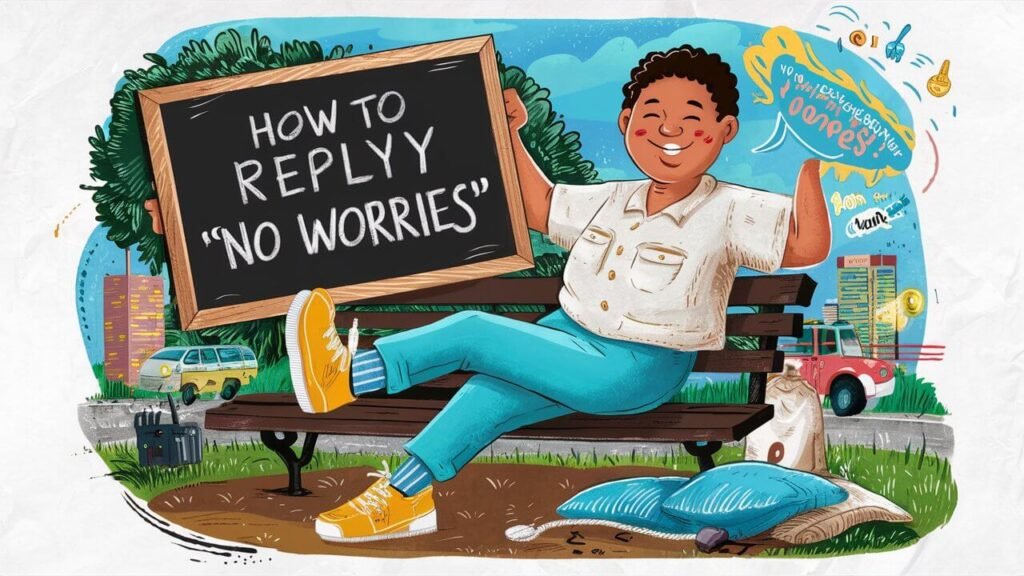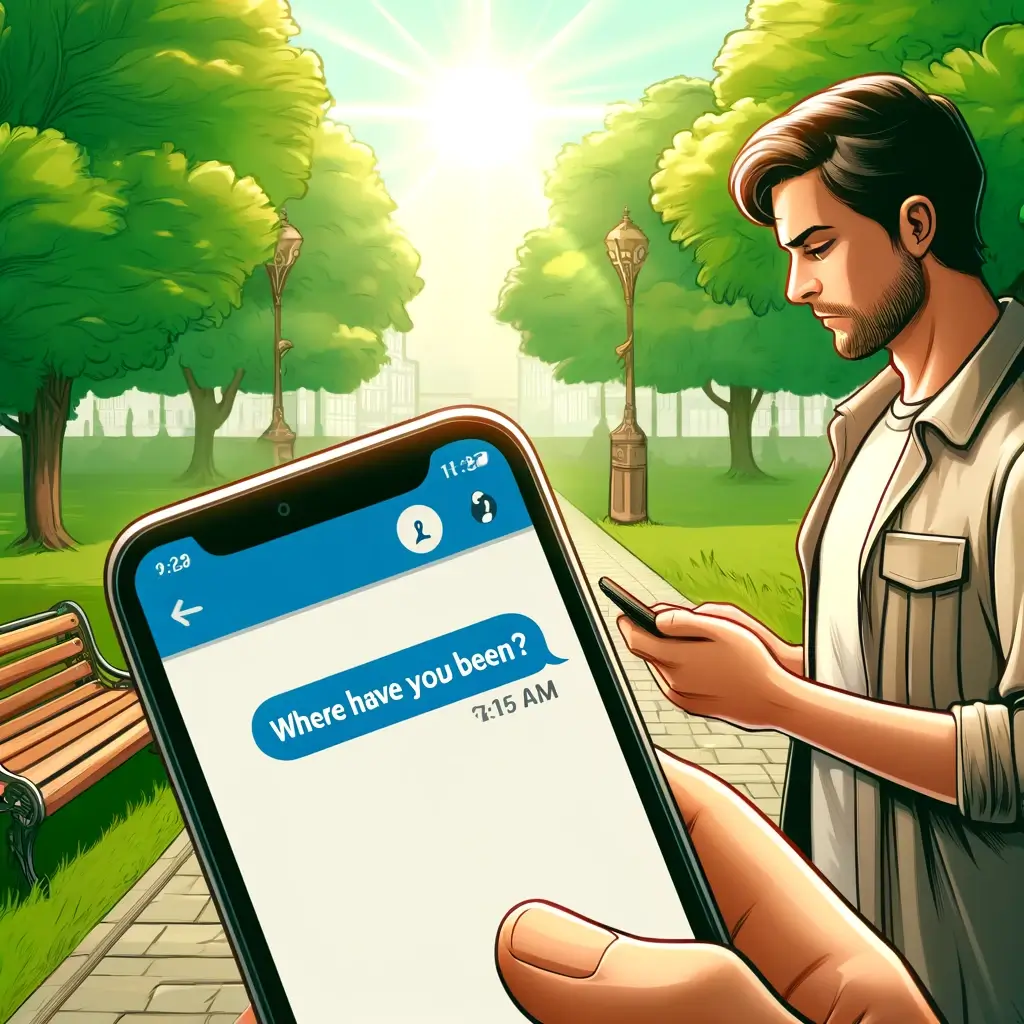
To reply “No worries,” you can say, “It’s all good,” or “No problem.” In today’s fast-paced world, people often seek quick and efficient ways to communicate.
Simple phrases like “No worries” are common in everyday conversations. Responding to such phrases appropriately helps maintain smooth interactions. Understanding the context and the relationship with the person is essential. Casual, friendly responses work well in informal settings. For professional scenarios, a polite acknowledgment is better.
Effective communication builds trust and enhances relationships, whether personal or professional. Knowing the right way to reply makes interactions more pleasant and productive. Always aim for clarity and positivity in your responses to foster better connections.
The Art Of Declining With Grace
Learning to say “no worries” gracefully is an important skill. It helps maintain good relationships and shows respect. This guide teaches you how to decline with grace.
Cultural Contexts Of Politeness
Politeness varies across cultures. In some places, politeness means directness. In others, it means being indirect.
Understanding cultural differences helps you respond appropriately. For example, in Japan, it’s polite to decline indirectly. In the US, direct answers are more common.
| Culture | Politeness Style |
|---|---|
| Japan | Indirect |
| USA | Direct |
Knowing these differences helps you use the right words. It shows that you respect the other person’s culture.
The Importance Of Tone
Your tone of voice matters. It can change the meaning of your words. A friendly tone makes “no worries” sound kind. A harsh tone can make it sound rude.
- Use a warm, friendly voice.
- Smile while you speak.
- Avoid sounding annoyed or impatient.
Practice your tone in front of a mirror. This helps you see how you appear to others.
Remember to stay calm and positive. This makes your message clear and kind.
When ‘No Worries’ Fits The Conversation
Understanding when to use “No Worries” can make conversations smoother. This phrase, while casual, can be powerful in the right context. Let’s explore when “No Worries” fits perfectly.
Casual Vs. Formal Settings
Casual settings are ideal for using “No Worries.” It’s friendly and relaxed. Use it with friends, family, or colleagues in informal chats.
- Example: Someone thanks you for a small favor.
- Example: A friend apologizes for being late.
In formal settings, choose your words carefully. “No Worries” might seem too relaxed for professional environments.
| Setting | When to Use |
|---|---|
| Casual | Small favors, minor apologies |
| Formal | Use sparingly, opt for “You’re welcome” or “No problem” |
Understanding The Listener
Consider the listener’s background and expectations. Some cultures might find “No Worries” too informal.
- Know the listener’s preferences.
- Understand the context of the conversation.
For a more personal touch, tailor your response to the listener. This shows respect and attentiveness.
- Listen to how they respond to you.
- Match their level of formality.
Remember, the goal is to keep the conversation smooth and positive.
Alternatives To ‘No Worries’
Using the same phrases can become repetitive. Finding different ways to say ‘No Worries’ can make conversations more engaging. Here are some friendly alternatives:
I Understand
Instead of saying “No Worries”, you can say ‘I Understand’. This phrase shows empathy and can make the other person feel heard. For example:
- “I understand, let’s move forward.”
- “I understand, and I’m here to help.”
It’s Okay
Another alternative is ‘It’s Okay’. This phrase is comforting and reassures the person. You can use it in different contexts, such as:
- “It’s okay, mistakes happen.”
- “It’s okay, we can fix it.”
No Problem
You can also use ‘No Problem’. This phrase is casual and friendly. It shows that you are not bothered by the situation. For instance:
- “No problem, I got it covered.”
- “No problem, happy to help.”
The Role Of Body Language
Understanding the role of body language can improve your communication. Non-verbal cues can speak louder than words. They convey emotions and intentions. When you say “No worries”, your body language should match. This ensures sincerity and trust.
Non-verbal Cues
Non-verbal cues are silent signals. They include gestures, facial expressions, and posture. These cues can affect how your words are received. For instance, a smile can make “No worries” sound genuine. A frown might convey the opposite.
Here are some common non-verbal cues:
- Eye Contact: Shows attentiveness and sincerity.
- Smiling: Indicates friendliness and positivity.
- Nodding: Suggests agreement and understanding.
- Open Palms: Conveys openness and honesty.
Matching Gestures With Words
Matching gestures with words enhances communication. It ensures that the message is clear. When you say “No worries”, consider these gestures:
- Smile: A simple smile can make your words more comforting.
- Nod: Nodding your head reinforces your message of reassurance.
- Open Hands: Open hands suggest transparency and comfort.
Using gestures that match your words builds trust. It shows you mean what you say. It also makes interactions more positive.
| Gesture | Meaning |
|---|---|
| Smile | Friendliness and positivity |
| Nod | Agreement and understanding |
| Open Hands | Openness and honesty |
Remember, your body language should align with your words. This ensures your message is received well. It makes your communication more effective.
Email Etiquette: Saying No Without Guilt
Learning to say no in emails can be hard. Many feel guilty when they decline requests. But it’s important to set boundaries. Here’s how to say no without feeling bad.
Crafting The Right Message
Start with a polite greeting. For example, “Hi [Name],”. This sets a friendly tone.
Then, acknowledge the request. Say something like, “Thank you for thinking of me.” This shows appreciation.
Next, state your reason clearly. You can say, “I have other commitments.” Be honest but brief.
Finally, ends on a positive note. Offer an alternative if possible. For instance, “Maybe we can work together next time.”
Tone In Written Communication
Your tone is crucial in emails. Use a friendly and respectful tone.
Avoid sounding harsh or indifferent. Use phrases like, “I appreciate your understanding.”
Emojis can help convey warmth. But use them sparingly. For example, a smiley face 😊 can make a message feel friendly.
| Do | Don’t |
|---|---|
| Be polite | Be rude |
| Be honest | Lie |
| Use a friendly tone | Sound indifferent |
- Start with a greeting.
- Acknowledge the request.
- State your reason.
- End on a positive note.
- Use polite language.
- Be clear and concise.
- Maintain a positive tone.
When To Avoid ‘no Worries’
Using the phrase ‘No Worries’ can be casual and friendly. But, there are times when it’s better to avoid it. This section will explore those instances.
Sensitive Situations
In sensitive situations, using ‘No Worries’ can seem dismissive. For instance, if someone shares a personal problem, your response should be more empathetic.
- Use phrases like ‘I’m here for you’ or ‘I understand’.
- Avoid casual language to show you are taking their feelings seriously.
Professional Boundaries
In a professional setting, using ‘No Worries’ can be unprofessional. It’s better to use more formal language.
| Scenario | Better Response |
|---|---|
| Client Apologizes for Delay | ‘Thank you for letting me know.’ |
| Colleague Misses a Deadline | ‘I appreciate your effort.’ |
Using the right language shows respect and maintains professional boundaries.
Expressing Empathy In Your Response
Expressing empathy in your response can make a big difference. It shows you care about the other person’s feelings. A simple phrase like “no worries” can be more impactful with empathy.
Showing Understanding
When someone apologizes, they often feel bad. By saying “no worries,” you can ease their mind. Adding a bit more can show a deeper understanding.
- “No worries, I understand how you feel.”
- “No worries, we all make mistakes.”
- “No worries, I’ve been there too.”
These responses show that you get them. You are not just brushing off their apology. You are acknowledging their emotions.
Being Supportive
Supportive words can comfort someone. Instead of just saying “no worries,” you can add supportive phrases.
- “No worries, I’m here to help.”
- “No worries, you’re doing great.”
- “No worries, we can fix this together.”
These responses make the other person feel supported. They know you are not upset. They also know you are ready to assist them.
Here is a table summarizing different ways to show empathy:
| Situation | Empathetic Response |
|---|---|
| Someone apologizes for being late | No worries, traffic can be bad sometimes. |
| Someone makes a mistake | No worries, mistakes happen. Let’s fix it together. |
| Someone feels bad about a problem | No worries, I understand how you feel. I’m here for you. |
Using empathetic responses can make your “no worries” much more meaningful. It shows that you care. It can comfort and support the other person.
The Impact Of Cultural Differences
Communication varies across cultures. Saying “No Worries” can be normal in one place. In another, it might confuse or offend. Understanding cultural differences is key. This helps in responding appropriately.
International Etiquette
International etiquette involves knowing how different cultures communicate. For instance, in Australia, “No Worries” is a common phrase. It means “It’s okay” or “Don’t worry about it.” In the United States, it might be less common but still understood.
In some Asian cultures, a direct “No Worries” may seem too casual. They prefer more formal responses. Understanding these nuances helps in cross-cultural communication.
Adapting To Various Cultural Norms
Adapting to different cultural norms is essential. Here are some tips:
- Observe: Watch how locals respond to similar situations.
- Ask: If unsure, ask a local or a colleague for advice.
- Adjust: Modify your responses based on the culture you are in.
Consider using a table to understand the different responses:
| Country | Common Response | Alternative Response |
|---|---|---|
| Australia | No Worries | It’s alright |
| United States | No Problem | Don’t worry about it |
| Japan | Daijoubu | It’s okay |
Adapting to cultural norms shows respect. It improves communication and builds better relationships.
Frequently Asked Questions
What Is A Better Response To No Worries?
A better response to “no worries” is “thank you. ” It shows appreciation and maintains a positive tone.
How Do You Respond To Don’t Worry?
You can say, “Thanks, I’ll try not to,” or “I appreciate it, I’ll stay calm. ” Keep your response positive and reassuring.
When Someone Says No Worries?
“No worries” means “it’s okay” or “don’t worry about it. ” It reassures someone that everything is fine.
How To Reply Thank You No Worries?
Respond with a friendly “You’re welcome,” “No problem,” or “Anytime!” To express your gratitude.
Conclusion
Mastering the art of replying “No worries” can enhance your communication skills. It conveys understanding and ease. Practice different variations to suit various contexts. Remember, a simple phrase can make interactions smoother and more positive. Keep these tips in mind for effective and friendly responses.

